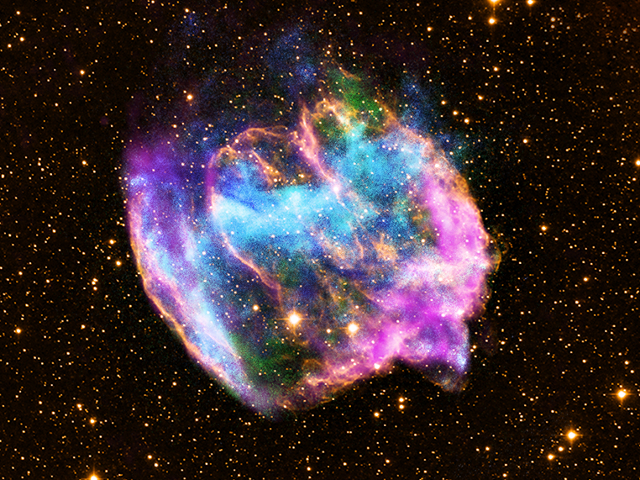
Composite X-ray/optical/radio image of the supernova remnant W49B. The structure and composition of this remnant hints that it was a gamma ray burst - one of the most violent explosions known - and likely harbors a black hole at its center.
Laura A. Lopez, Enrico Ramirez-Ruiz, Daniel Castro, and Sarah Pearson used long-exposure X-ray observations to study the remnant. They found distinct signs of a supernova with strong jets shooting from the poles. The astronomers failed to find any sign of a neutron star, meaning the supernova must have left a black hole instead. And the emissions suggest it's only 1,000 years of age, which would make the black hole the youngest known in our galaxy.
Over their lifetimes, stars fuse light atoms into slightly heavier ones, but fusing most of the elements in the periodic table requires the intense energies of a supernova. By mapping certain of these elements—iron in particular—in a supernova remnant, astronomers can recreate the conditions under which the star died.



No comments:
Post a Comment